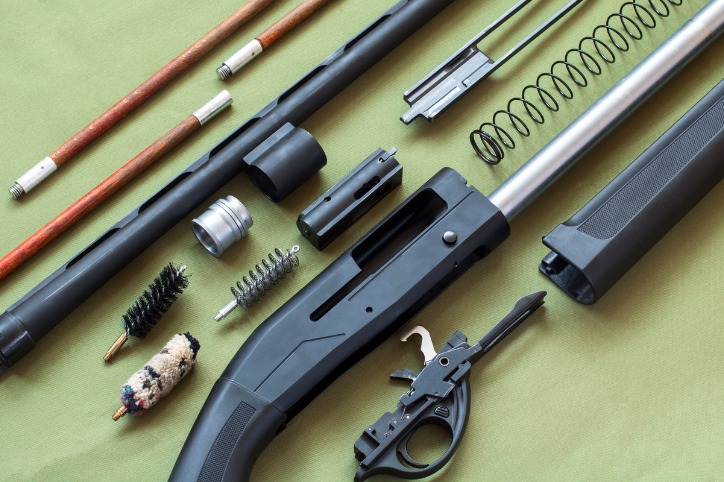7 Tips For Cleaning Your Firearms
Aug 22nd 2022

It’s important to know how to clean a gun to ensure its proper function and safety. However, if it’s your first time or it’s been a while, you may want some pointers for cleaning a gun properly. To help, Six Maritime is offering these seven tips for how to clean a firearm.
When you’re ready to take your skills to the next level, check out our training schedule for tactical training and contact us for more information or to enroll in a course.
Check The Manual
If you’re not already familiar with your gun’s manual, you should take the time to read it over. While the tips below serve as a general guide for cleaning firearms, you’ll find the most specific information about your firearm in its corresponding manual. There, you’ll find valuable information on how to safely disassemble your gun and how to clean it. If you’re not sure where your manual is located, you may be able to find a version of it online or purchase another through the manufacturer’s website.
Unload & Disassemble
Before beginning, remove the magazine and ensure the chamber is clear. Then, begin to disassemble the firearm based on the user manual. If you do not have access to the manual or feel uncomfortable disassembling it for the first time, our instructors can assist you with an in-person demonstration. Knowing how to disassemble your gun is important to regularly clean the firearm and check it for any issues.
Clean The Barrel & Chamber
Take a bore brush and clean out the chamber and barrel to loosen large carbon and metal fouling. Next, dip a cleaning patch into bore solvent and place it on the tip of a cleaning rod. Push the patch straight through the barrel and out the other side instead of pulling it back out, as this can redeposit gunk back into the bore. Allow the cleaning solvent to sit for 10-15, to break down bore fouling for easier removal. Use the bore brush to scrub the inside of the barrel then use another clean, dry patch to remove any residue. Sawab out the bore with clean patches until it comes out clean. Use a pull-through tool, such as a bore snake and CLP, to lightly lubricate the inside of the bore to protect against corrosion. Do not use gun oil for lubrication! If you are storing the gun long-term, you can use a heavier lubricant, just be sure to clean it out before using the gun.
Clean & Lubricate The Action
Have a drip pan ready and spray the action generously with an action cleaner solvent from the top of the receiver. Once dry, use a needle applicator to precisely apply lubrication to the frame, action, slide assembly, and barrel exterior. Do not apply lubrication directly to the gun, and do not over-lubricate. Too much lubrication can accumulate more debris and contaminants, potentially causing an issue when the firearm is in use.
Clean & Inspect All The Small Parts
While the firearm is disassembled, be sure to clean and inspect the other parts. This includes the extractors and springs. Also, check the screws throughout the firearm, including on the scope mount, sling swivel studs, and the side plates or grip panels. Ensure the screws are snug and rust-free. If you see any rust, remove the screws and clean underneath with a piece of #0000 super-fine steel wool and a tiny amount of oil. Before finishing up, clean the exterior of the barrel, barrel hood, barrel lug, and feed ramp.
Reassemble & Wipe Down
Reassemble your firearm and carefully place all the small springs and other parts back into place. Once reassembled, use a gun cloth, reel cloth, or CLP wipes to wipe down the exterior. These cloths are soft, so they won’t scrap the metal, and are pretreated with silicone lubricant. This helps to remove any leftover debris and acidic prints, and leaves the metal with a nice shine.
Perform A Function Check
Any time you disassemble and reassemble a firearm, you need to perform a functional check to ensure that everything was reassembled correctly and that the firearm will operate as intended. Check the function of the trigger mechanism, safety, slide operation and locking, and magazine retention and ejection. If any part does not work smoothly as intended, disassemble the firearm to see what is causing the issue. If you are concerned about safety issues, you can bring the firearm to us to have it inspected for your peace of mind.
Six Maritime offers tactical weapon training to help hone your skills in real-time. Contact us today to start working one-on-one with a trainer.




